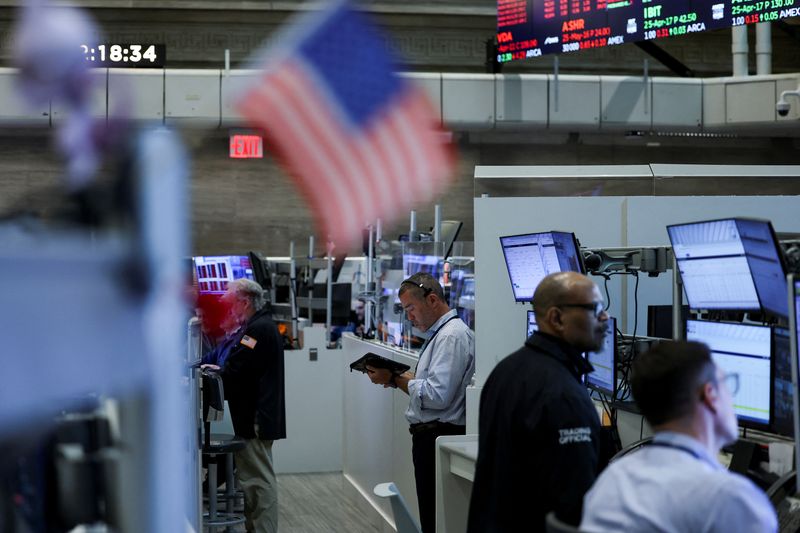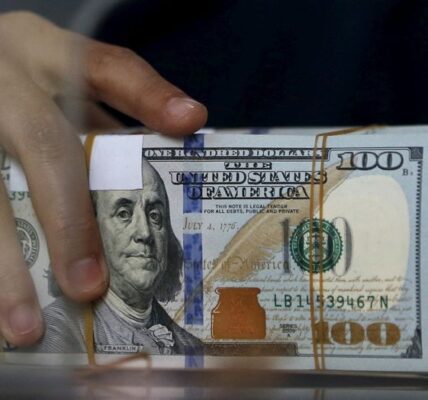NEW YORK -Wall Street stocks tumbled on Thursday on mounting worries over the economic impact of U.S. President Donald Trump’s multi-front tariff war.
All three major U.S. stock indexes fell sharply, forfeiting much of the previous session’s gains as growing concerns over the escalating Washington-Beijing trade face-off dampened optimism over upbeat economic data and U.S.-Europe trade negotiations.
After Trump announced a 90-day tariff reprieve on Wednesday, the S&P 500 surged 9.5%, the largest one-day percentage jump since October 2008. The tech-heavy Nasdaq soared 12.2%, notching its second-biggest daily gain on record.
Despite Wednesday’s bounce, the S&P 500 remained more than 6% below levels before the reciprocal tariffs were announced last week.
“Investors are still uncomfortable with it, because they don’t know what the end game is,” said Paul Nolte, senior wealth advisor at Murphy & Sylvest in Elmhurst, Illinois. “I think what we’re seeing, still, is investor concern about tariffs and that is pretty much front and center for everything.”
The Labor Department’s Consumer Price Index report showed the prices consumers pay for a basket of goods unexpectedly edged lower in March, with core price growth cooling down 2.8% year-on-year, coming within one percentage point of the Federal Reserve’s 2% inflation target.
But the Fed’s path forward, in light of ongoing trade negotiations, is less clear.
Fed Governor Michelle Bowman said on Thursday that while the U.S. economy remains strong, the effects of Trump’s trade policies are unclear, while Chicago Fed President Austan Goolsbee said rate cuts could resume once the uncertainties surrounding trade policy is resolved.
In response to Trump’s 90-day tariff pause, the European Union will delay retaliatory levies on American goods as countries within the bloc scramble to reach trade deals with Washington, said European Commission chief Ursula von der Leyen.
But the trade war with Beijing persists, with China vowing to “follow through to the end” if the U.S. does not let up.
The CBOE Market Volatility Index, often called the “fear index,” remained elevated, and was last at 44.80.
“It’s hard for investors to feel comfortable about buying stocks with volatility so high,” Nolte added.
The Dow Jones Industrial Average fell 1,162.76 points, or 2.86%, to 39,445.69. The S&P 500 lost 199.51 points, or 3.66%, at 5,257.39 and the Nasdaq Composite dropped 753.78 points, or 4.40%, to 16,371.19.
All 11 major sectors in the S&P 500 were lower, with energy and tech suffering the steepest declines.
Big Tech came under pressure once again, with each of the so-called Magnificent Seven group of artificial intelligence-related momentum stocks down between 3.6% and 8.5%.
CarMax slid 17.0% after the used-car retailer missed fourth-quarter profit expectations.
First-quarter earnings season kicks off on Friday with big banks, including JPMorgan Chase, Morgan Stanley and Wells Fargo due to report.
Declining issues outnumbered advancers by a 5.21-to-1 ratio on the NYSE. There were 30 new highs and 169 new lows on the NYSE.
On the Nasdaq, 886 stocks rose and 3,499 fell as declining issues outnumbered advancers by a 3.95-to-1 ratio.
The S&P 500 posted no new 52-week highs and six new lows while the Nasdaq Composite recorded 11 new highs and 128 new lows.
Please like, comment, and share this article if you found it helpful and
informative.
For more news check out Big Town Bulletin News
For more from Big Town Bulletin check out Big Town Bulletin



